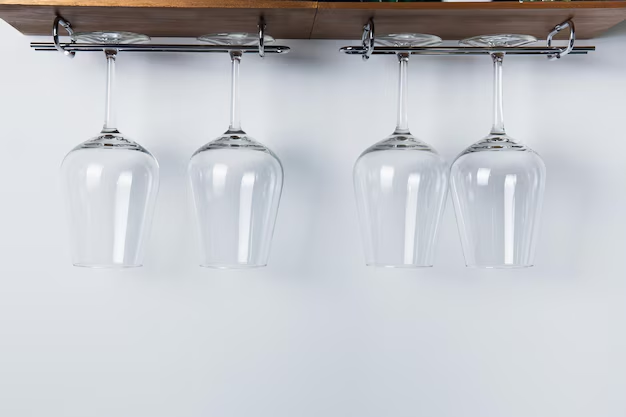Preserving Nature's Bounty: Storing Bulbs in Your Refrigerator 🌼
Have you ever experienced the disappointment of a blooming season cut short, or dreams of a vibrant winter garden gone awry due to a mishap in storage? Ensuring your flower bulbs are stored correctly can be a game-changer for both gardening enthusiasts and casual gardeners alike. The secret? Utilizing your refrigerator. Let’s delve into the fascinating process of how to store bulbs effectively in the fridge to make the most of their beauty and longevity.
🌱 Understanding Bulb Dormancy and Its Importance
Before embarking on the storage journey, it's essential to understand bulb dormancy. Like many living organisms, bulbs go through a natural cycle of dormancy which allows them to survive adverse conditions. During this period, growth slows and the bulb's energy is conserved until favorable conditions return. Ensuring that bulbs experience these cold periods helps synchronize with nature’s rhythms, ensuring robust blooms come spring.
Quick Tip: Not all bulbs require refrigeration. Generally, spring-flowering bulbs like tulips, daffodils, and crocuses benefit the most from a chilling period.
🧊 The Refrigeration Process: A Step-by-Step Guide
1. Selecting the Right Bulbs
- Spring-Flowering Bulbs: These include tulips, hyacinths, and crocuses. They thrive with a chilling period to mimic winter conditions.
- Summer-Flowering Bulbs: Such as dahlias or gladiolus typically do not need refrigeration since they are planted in spring and bloom in summer.
2. Timing It Right
Timing is critical. For most spring bulbs, the refrigeration process should begin about 6-8 weeks before you intend to plant them. This mimics the cold snap they would naturally experience outdoors.
3. Preparing the Bulbs
- Cleaning: Remove any soil, roots, or dead tissue. Ensuring the bulbs are dry is key to preventing mold.
- Inspection: Discard any damaged or diseased bulbs. Healthy bulbs are firm and devoid of soft spots.
4. Packing for Refrigeration
- Container Options: Use paper bags, mesh bags, or egg cartons to store the bulbs. Ensure they're ventilated to prevent moisture buildup.
- Labeling: Clearly label each container with the bulb type and date of storage.
5. Storing
- Location: Store bulbs in the crisper drawer or a separate drawer away from fruits and vegetables. Certain fruits like apples release ethylene gas, which can damage bulbs.
- Temperature: Maintain a temperature between 35°F to 45°F (1.5°C to 7°C) to keep bulbs dormant without freezing.
🚫 Common Mistakes and How to Avoid Them
- Mixing with Produce: As mentioned, keep bulbs separate from produce to avoid ethylene gas exposure which can trigger premature growth.
- Moisture Control: Mold is a gardener’s nemesis. Ensure bulbs are dry before storage and check on them periodically.
- Incorrect Containers: Plastic bags without ventilation can trap moisture, leading to rot.
🌸 Benefits Beyond Blooms
Engaging in the proper storage of bulbs not only extends the life of your plants but provides a plethora of other benefits:
- Cost Efficiency: Preserving bulbs from season to season saves money. Rather than buying new ones each year, effective storage means replanting becomes easy and economical.
- Environmental Impact: Reusing bulbs reduces waste and strengthens your connection to sustainability practices.
- Gardening Satisfaction: Witnessing bulbs bloom after months of dormancy and care brings a satisfying sense of accomplishment.
🌺 Related Subtopics for Green Thumbs
Indoor Gardening with Bulbs
An increasingly popular trend, indoor gardening with bulbs can bring year-round beauty within your home. By controlling the environment – humidity, light, and temperature – you can enjoy their beauty regardless of the season.
Off-season Planting Strategies
Learning about techniques such as forcing bulbs to bloom indoors by manipulating their environment offers a fascinating dive into advanced gardening practices. This allows eager gardeners to get spring-like blooms even in the depths of winter.
Troubleshooting Growth Issues
Even with meticulous care, bulbs may sometimes refuse to bloom. A troubleshooting guide can unravel mysteries around non-blooming bulbs, such as unsuitable storage conditions, incorrect planting depths, or inappropriate watering.
🌿 Practical Tips for Bulb Enthusiasts
Here's a handy checklist for storing bulbs effectively:
- 🗓️ Plan Ahead: Begin refrigeration 6-8 weeks before planting.
- 📍 Correct Placement: Store in a separate fridge drawer away from fruits.
- 💧 Keep it Dry: Ensure bulbs are free from moisture and properly ventilated.
- 🔍 Regular Checks: Monitor periodically for signs of mold or damage.
🌼 Nurturing Your Bulbs Post-Refrigeration
After a successful chilling cycle, bring bulbs out into the open air a few days before planting. This acclimation helps ease the transition from a cold dormancy to a warmer planting environment, boosting their chances of robust growth.
As the seasons change and your garden transforms with vibrant blooms, you’ll find a sense of harmony and achievement, having stored your bulbs with care and precision. This guide has empowered you with practical strategies to nurture your love for gardening, ensuring that each bulb stored in your refrigerator holds the promise of future beauty and joy.
